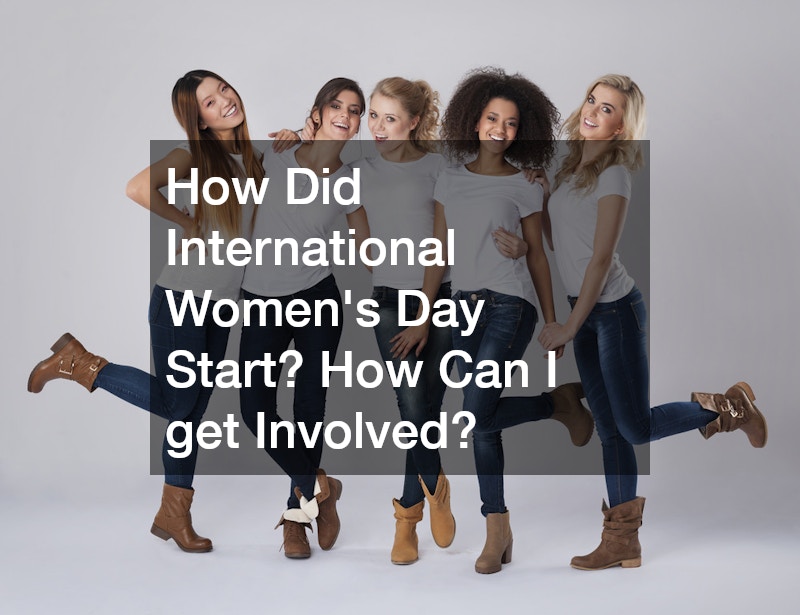Where Did International Women’s Day Come From?
International Women’s Day (IWD) has grown into a global movement celebrated annually on March 8th, but its origins date back more than a century. In 1910, a call was made for a day dedicated to advocating for women’s rights worldwide. The first International Women’s Day was observed on March 19, 1911, by women in Austria, Denmark, Germany, and Switzerland. Three years later, women in the UK joined the movement, using the occasion to demand women’s suffrage.
The United Nations first officially celebrated IWD in 1975, and since then, the day has gained momentum. However, it wasn’t until the rise of the internet in the 2000s that participation broadened significantly, with the launch of InternationalWomensDay.
com in 2001. Hashtags promoting each year’s theme also began to circulate, helping to spread the message across digital platforms. Today, while many countries recognize March 8 as an official holiday, it remains unrecognized in that capacity in the U.S.
Celebrations and Themes
International Women’s Day is marked by events worldwide, including marches, conferences, and speeches from influential voices known as International Women’s Day speakers. These events center around a global theme each year that reflects the ongoing fight for gender equality. For example, the 2025 theme, #AccelerateAction, focuses on speeding up progress toward gender parity. According to the World Economic Forum, achieving full equality will take another 134 years, meaning that real change requires immediate action.
The IWD 2025 Theme: Accelerating Action
The 2025 IWD campaign calls for collective effort to “Accelerate Action” and close the gender gap sooner than current estimates predict. This theme emphasizes the importance of recognizing what strategies work for women’s advancement and implementing these solutions faster. From breaking down workplace barriers to improving access to education, many proven methods exist to advance women’s equality. Now, the focus must be on amplifying and expanding these initiatives globally.
One of the best ways to create meaningful change is through leadership and advocacy. Many International Women’s Day speakers highlight actionable steps to elevate women’s opportunities across different sectors, urging attendees to drive forward progress. This worldwide solidarity on March 8 is a powerful reminder that small actions can add up to major societal shifts.
Challenges Facing International Women’s Day
Despite its global prominence, IWD still faces challenges. Many nations where it is recognized as a holiday have a long way to go in implementing real gender parity. Significant barriers, such as the gender pay gap, limited access to education for girls, and workplace discrimination, continue to hinder progress. Additionally, in some parts of the world, IWD celebrations remain symbolic rather than impactful, with little follow-through on policy changes or reforms.
Another ongoing challenge is maintaining momentum. While IWD receives considerable attention on social media and in public events, ensuring that this awareness translates into year-round advocacy remains a struggle. The annual campaign themes, such as #AccelerateAction, are crucial for reminding the global community of the long road ahead.
How to Get Involved
International Women’s Day offers many ways to participate and make a difference. Whether through attending events, joining online discussions using the yearly hashtags, or volunteering with organizations that focus on gender equality, everyone can contribute. By supporting the call to #AccelerateAction in 2025, individuals can help speed up the rate of progress toward gender parity and ensure that future generations benefit from a more equal world.
Here are some specific ways you can get involved and celebrate International Women’s Day in 2025:
-
Attend or organize an IWD event: Participate in local or virtual IWD events, such as marches, panel discussions, or workshops, to engage with the community and raise awareness.
-
Support women-owned businesses: Make a conscious effort to support women entrepreneurs by purchasing from women-owned businesses and spreading the word about their products or services.
-
Volunteer with women’s organizations: Contribute your time to organizations focused on women’s rights, gender equality, or helping women in need. This could be through mentoring, advocacy, or providing financial support.
-
Use and share the IWD hashtag: Participate in the online conversation by sharing posts and stories using the 2025 theme hashtag, #AccelerateAction. This helps spread awareness and shows solidarity with women around the world.
-
Invite an International Womens Day speaker: If you have the means, invite an International Women’s Day speaker to give a talk or presentation at your workplace, school, or community center to inspire others and spark action.
-
Educate yourself and others: Read books, articles, and research papers on women’s rights, gender equality, and related topics. Share what you learn with your social circle to raise awareness and promote understanding.
-
Challenge gender bias and stereotypes: Whether at work, home, or in your community, be vocal in challenging behaviors and ideas that perpetuate gender inequality. Use your voice to stand up for fairness and equality.
-
Donate to causes supporting women’s equality: Contribute to organizations that are working to close the gender gap, improve access to education, or fight for women’s rights around the world.
In conclusion, International Women’s Day has a rich history rooted in activism and advocacy for women’s rights. It continues to evolve, but the ultimate goal remains the same: achieving gender equality. By coming together and taking actionable steps, we can help close the gap and ensure that progress is accelerated for women worldwide.
.


